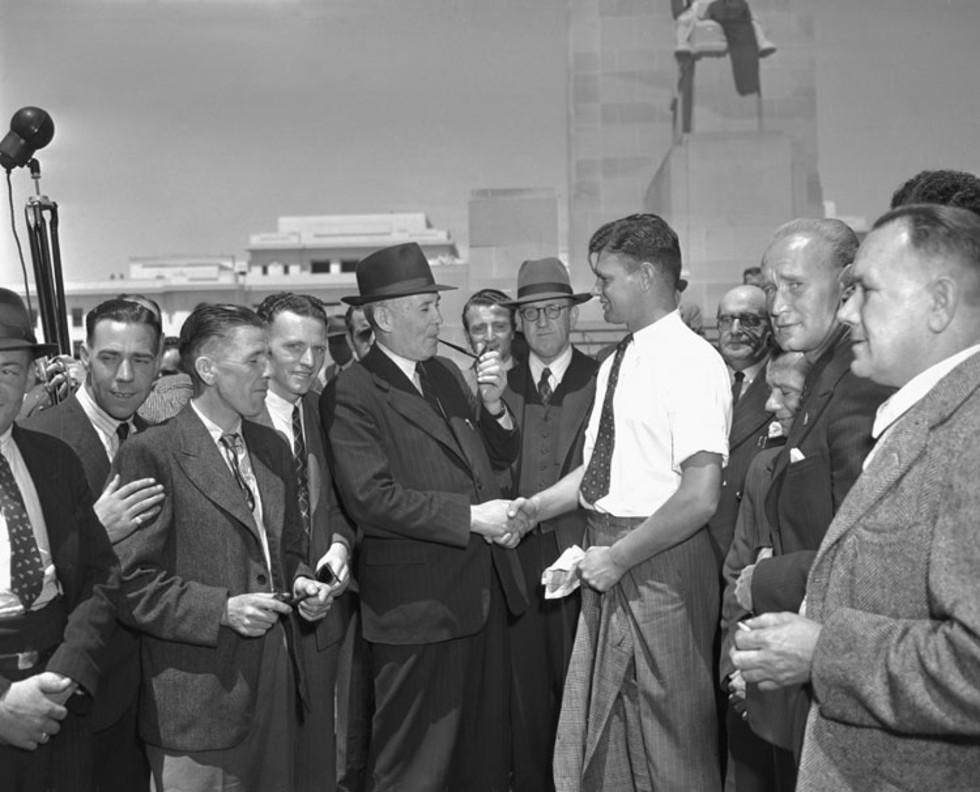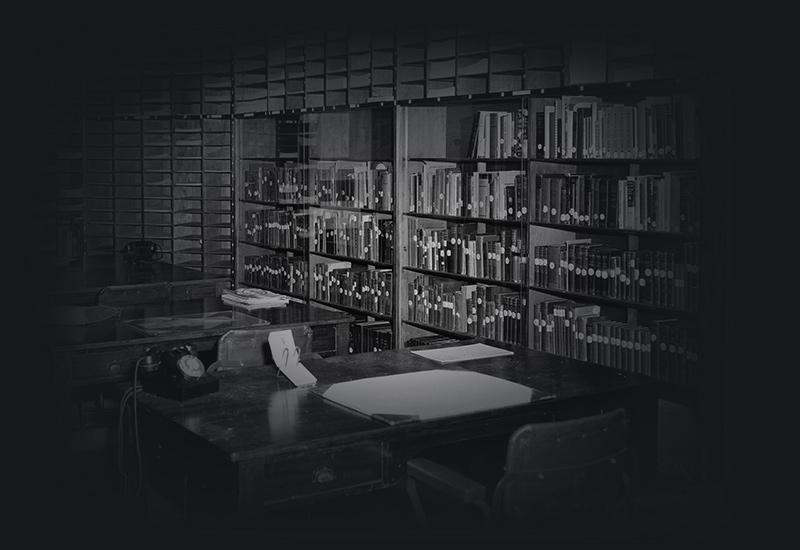
Photograph of Prime Minister Ben Chifley and Minister for Immigration Arthur Calwell greeting migrants.
Aboriginal and Torres Strait Islander people should be aware that the National Archives' website and collection contain the names, images and voices of people who have died.
Some records include terms and views that are not appropriate today. They reflect the period in which they were created and are not the views of the National Archives.


Photograph of Prime Minister Ben Chifley and Minister for Immigration Arthur Calwell greeting migrants.
This photo shows Prime Minister Ben Chifley and Immigration Minister Arthur Calwell (centre, back) greeting a recently arrived migrant outside Old Parliament House in Canberra.
This photograph illustrates a symbolic moment in Australia's postwar immigration history when Australia began a drive to attract not only British migrants but also refugees and displaced persons.
Hundreds of thousands of people were forced to flee their countries and live in refugee camps during World War II.
After the war, Prime Minister Joseph Chifley approved an urgent recruitment program in Europe to attract migrants. On 30 June 1947 Arthur Calwell, the Minister for Immigration, cabled Prime Minister Ben Chifley to tell him that he had sent two departmental officers 'to make preliminary selection in displaced persons camps of those classes of workers who can best assist our manpower shortages'—that is, people to work as farm labourers, nurses, domestic workers, construction workers and so on. Between 1947 and 1951 about 170,000 immigrants came to settle in Australia under this program.
The man in the centre of the photograph represents the 'ideal' immigrant at the time, as encouraged by the ‘White Australia’ Policy: a young white man, with years of work ahead of him.
Learning resource text © Education Services Australia Limited and the National Archives of Australia 2010.
Learn how to interpret primary sources, use our collection and more.
